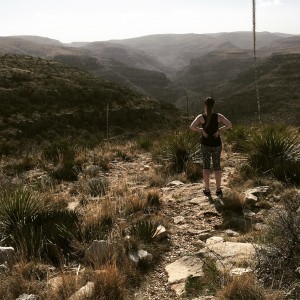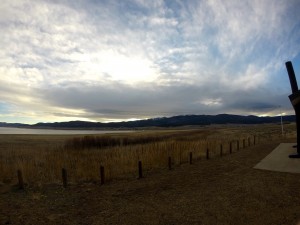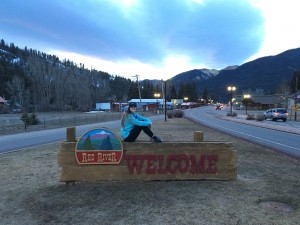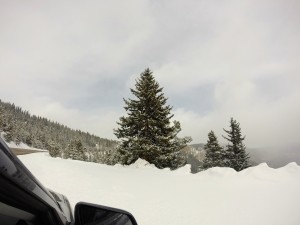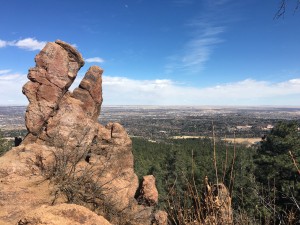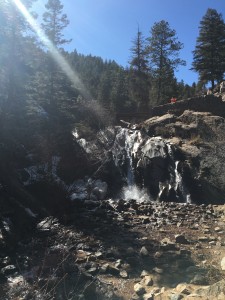“Thousands of tired, nerve-shaken, over-civilized people are beginning to find out that going to the mountains is going home. Wilderness is a necessity.” – John Muir
The Mountains Are Calling, and I Must Go.
I felt out of it. Why didn’t I feel motivated? Why was I so tired?
A myriad of thoughts and anxieties clouded my head, and I had an overwhelming urge to get out of my room, off campus, and out of Austin. The mountains had always fascinated me, so I texted my friend Harry and told him we were going on a road trip. We eventually decided on New Mexico and Colorado, two states with beautiful landscapes: desert, snow, plains, mountains.
Roswell, New Mexico
Roswell was an interesting place. The town itself is barren. We visited a the Bottomless Lake State Park, which, in fact, had a bottom. The lake was dry. A dead fish lay in the soil. We stepped out of the car, and I felt a sense of sadness. I wasn’t sure if this was normal for the lake, and I speculated that New Mexico’s climate fluctuates a lot. Even so, the image reminded me of climate change. Species face the warming temperatures with fear; their habitats will be destroyed, and they even risk extinction. We left shortly after in a bad mood as nature revealed its pain.
Carlsbad Caverns National Park
About a two hour drive from Roswell is the Carlsbad Caverns, located in the Guadalupe Mountains and beneath the Chihuahuan Desert.. Harry and I were ready to hike and see the intricacies of cave formations. The guides reminded us of the strenuous walk down and up. “The elevators aren’t working, so if you go down, the only way up is to hike it.” We took on the challenge and walked down the cavern’s entrance.
We sped past many tourists – sweating parents, whining children, determined and worn elderly. The trail was steep (about a 1.25 miles decent), and I wondered how much worse my legs would feel on the way up. Once the last bits of daylight disappeared, we felt the cave’s climate drop to a cool 50–60 degrees. I didn’t use my jacket since the exercised warmed my body. After a bit of walking, we came across The Big Room, which was a roomy cave camber (about 4,000 feet long, 625 feet wide, and 255 feet high). The limestone ceilings drip stalactites formed from the cave’s moisture. The walls are full of ocean fossils ranging from plants to fish.
Although the bats were not in the cave at the time, the information desk informed us that seventeen species of bats live in the park. While this number astonished me, the park rangers formed a frown. Apparently, there used to be huge amounts of bat populations in the area. However, the pesticide DDT resulted in a significant decrease in bats.
As we walked back up, we felt the burn. I had to stop several times to catch my breath, but since I was training for Costa Rica’s hiking, I kept going. When we reached the top, both of us commented on how relaxed and carefree we felt. It only took three hours of exercise and a beautiful environment to perk my mood.
Roswell, New Mexico
After the Carlsbad Caverns, we decided to hunt aliens…at a museum…that was closed. The town looked empty and bare. The tourist shops were unattractive and empty, and many of the shops were permanently closed. Our natural cavern high decreased as soon as we saw the city’s empty sights.
Santa Fe, New Mexico
We left Roswell with a few good memories, but were ready to get out of the city. We stopped in Santa Fe to explore the town’s cute art. Many artisans popped up show on the sidewalks. It was a beautiful day, and we saw beautiful buildings and natural landscaping. The clay walls reminded me of the red sand that surrounded the area. The highlight was the pleasant climate, which was a sunny 70 degrees. This was a good experience, but didn’t really help my wellness, as compared to the mountains we visited next.
Red River and Carson National Parks
We planned our route to hit as many mountains as possible. The highlight was taking a random side road that led to two places: a Buddhist temple and a rehabilitation center. Thankfully, Harry was from Minnesota, so once we hit snow, our car was safe. While driving around, we fell silent. We were in awe of the snow and the quaking aspen, ponderosa pine, and douglas-fir (or Christmas) trees. We saw a family of Elk, and just watched (no photos, no social media!)
At one point, we reached a 13,000 feet elevation. I didn’t feel a difference, except the air was quite chilly! Either way, the peaceful scenery helped me think through a lot of my anxieties and actually…feel okay.
The Rocky Mountains
Here we spent most of the first day in the Rocky Mountains. The scenery was breathtaking. Among clusters of conifers were swooping birds too far to identify. The best moment was seeing a mountain goat (yes, a Topper in real life) climbing the side of a rocky wall. I admired their skill – a flexible, risk-taking attitude that every mountain goat observed and learned from their parents. They learned to adapt to their environment and use it to their advantage. I stepped out the car for a scenic photo, and I touched the fresh snow with the tips of my finger. As soon as I turned around, I felt a snowball hit my leg. What’s therapy without a bit of eco-fun?
From Vacation to Ecotherapy
“We still carry this primal relationship to the Earth within our consciousness, even if we have long forgotten it. It is a primal recognition of the wonder, beauty, and divine nature of the Earth. It is a felt reverence for all that exists. Once we bring this foundational quality into our consciousness, we will be able to respond to our present man-made crisis from a place of balance, in which our actions will be grounded in an attitude of respect for all of life. This is the nature of real sustainability.” — Llewellyn Vaughan-Lee
Abbie Hausermann, founder of Dedham’s High Peaks therapeutic mentoring center, notes that more and more psychologists are using ecotherapy as a tool for their patients. She states that ecotherapy “really emphasizes the client’s connection to nature, and how nature can sometimes be used as a metaphor for challenging events or things that come up in life” (2). That’s certainly something I encountered. I felt trapped by the worries that circled my head: what happened to my motivation? How long has it been since I was truly happy and satisfied? By the end of my trip, I got part of my answer. I want to focus more on social justice; I want to take action on campus by making it more sustainable. I’m in the Ecolead program for a reason, so what’s stopping me from doing more to help the environment? The trip fostered an even greater love for the earth, mainly because my favorite landscape is the mountains. I resonate with the mountains’ natural highs and lows. Just like Hausermann, I felt an emotional and spiritual connection to the landscapes I visited, and its something I can’t exactly explain. It’s just something you have to experience.
So how does my ecotherapy experience translate to the real world? One of my friends asked if there was data to support my hypothesis. She asked if looking at an image of nature would be just as satisfying as being in nature. Unfortunately, a picture doesn’t substitute as well as the real thing. A study by a clinical psychologist found that “gazing at an authentic natural space reduces stress, whereas a digital replica of nature soothes only as well as a boring blank wall.” (1) In fact, natural spaces not only soothe us, but restore our energy to focus (1). I believe this is due to nature’s lack of stress, at least, when compared to an urban city. When I was in the mountains, I felt like time was irrelevant. I wasn’t worried about the next assignment. I wasn’t worried about what time I had to wake up. I just took in the scenery and breathed – all the anxious noise faded away.
The main point of ecotherapy is to connect with nature. Depression, a mood disorder that stems from a lack of connection to people, places, and emotions, can be helped by ecotherapy’s connection with nature. At least, that was what I experienced. I went from having a lack of motivation to an awakened vibrancy. It’s been several weeks, and that vibrancy is still going. Why does nature have a restorative harmony? Is it because I don’t have many responsibilities during a vacation? Or is it something more?
According to a UK study, ecotherapy increases positive mood, self-esteem, and clarity, while decreasing feelings of stress and depression (5). I was curious how exercise affected others; on my trip, I felt just as happy sitting under a tree as I did after the long cave hike. In the same UK study, researchers found that those who participated in physical activity didn’t differ (mood-wise) from those who didn’t participate in physical activity. However, activity is great for other health benefits.
Throughout my life, I’ve felt a spiritual connection to nature. Nature is powerful. It doesn’t need humans, which is scary but also comforting. Nature is much greater than the human mind, in the sense that no human can control it. It was refreshing to simple “be” in the environment, which was somewhat untouched by people. Knowing that nature is always there quells any feeling of isolation. We are never alone – we share a relationship with the earth, the soil, the sun, the water, and all the living beings within this realm.
Citations
(1) http://scienceline.org/2010/08/can-a-stroll-in-the-park-replace-the-psychiatrist’s-couch/
(2)http://www.bostonmagazine.com/health/blog/2015/08/04/ecotherapy-boston/
(3) http://www.highpeaks-ma.com
(4) https://www.mentalhelp.net/blogs/ecotherapy/
(5) http://www.greenexercise.org/pdf/JEPM%20-%20CRN%20Study.pdf
